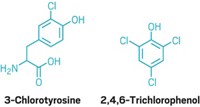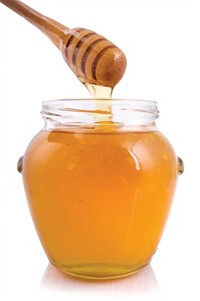Advertisement
Grab your lab coat. Let's get started
Welcome!
Welcome!
Create an account below to get 6 C&EN articles per month, receive newsletters and more - all free.
It seems this is your first time logging in online. Please enter the following information to continue.
As an ACS member you automatically get access to this site. All we need is few more details to create your reading experience.
Not you? Sign in with a different account.
Not you? Sign in with a different account.
ERROR 1
ERROR 1
ERROR 2
ERROR 2
ERROR 2
ERROR 2
ERROR 2
Password and Confirm password must match.
If you have an ACS member number, please enter it here so we can link this account to your membership. (optional)
ERROR 2
ACS values your privacy. By submitting your information, you are gaining access to C&EN and subscribing to our weekly newsletter. We use the information you provide to make your reading experience better, and we will never sell your data to third party members.
Analytical Chemistry
Sample Collection
Dust And Duct Tape Help Chemists Gather Clues
by Bethany Halford
February 6, 2012
| A version of this story appeared in
Volume 90, Issue 6
When it comes to tracking down terrorists, tracing a chemical threat back to its source is only part of the problem that scientists face. They also have to figure out the best way to gather that chemical evidence.
“There are many chemicals that are extremely toxic and can be used as weapons or can be used for illegal purposes,” says Randolph Long, acting director of the Department of Homeland Security’s (DHS) Chemical & Biological Division. “The collection of those chemicals and any evidence related to those chemicals can be a challenge because there are different rates of absorption of those chemicals into things like carpet or wallboard.” That’s why part of DHS’s Chemical Forensics Program is devoted to developing methods for gathering chemical evidence.
Dennis Hooton, a chemist by trade and a senior program manager with the contract research organization MRIGlobal, in Kansas City, Mo., has spent decades doing trace chemical analysis for the Environmental Protection Agency. Applying that know-how to chemical threat agents seemed like a natural crossover, he says.
Hooton and his colleagues studied different ways to collect chemical attribution signatures—the substances likely to show up with a chemical threat agent—for the nerve agent sarin and the blister agent sulfur mustard. They then developed a standard operating procedure that crime scene investigators can consult when they go to collect such samples. He presented the work during a poster session at the American Chemical Society national meeting in Denver last fall.
The idea, he says, was to find off-the-shelf collection media that could pick up these signature compounds from various surfaces and then extract the compounds with ease. Duct tape, silicone, and cellulose blotting paper are all effective at removing such residues, he found.
“We got better recovery when there were environmental contaminants around, such as dust,” Hooton notes. “If it’s a clean surface, the chemicals may disappear. If it’s a dusty, dirty surface, it increases the likelihood that you could recover the chemicals that were originally released or used in that area.”
That comes as no surprise to Kristin A. Herrmann Favela, a senior research scientist at Southwest Research Institute in San Antonio. “Dust is actually very fascinating,” she tells C&EN. Favela and her coworkers recently published a paper about using dust to gather the chemical attribution signatures from chemical threat agents (Forensic Sci. Int., DOI: 10.1016/j.forsciint.2011.09.024).
“There are several advantages to using dust,” Favela says. “Dust is everywhere and it is very well known to concentrate and preserve chemicals. This has been well documented for pesticides in people’s house dust. Dust also has a low moisture level and low microbial activity,” so chemicals tend to stay on it without decomposing.
Favela and her coworkers examined how well dust worked at collecting chemical attribution signatures of chemical threat agents. They found it was excellent at preserving these chemicals, even when exposed to various temperatures and different pH levels. “The fact that we were able to pull out these pretty low-level signatures from dust is a pretty great feat,” Favela notes. “It speaks to the power of the analytical instrumentation.”




Join the conversation
Contact the reporter
Submit a Letter to the Editor for publication
Engage with us on Twitter